Coinciding with common belief, it can be quite correctly stated that Vitamin C (ascorbic acid) is an essential nutrient that we should care about. Vitamin C has proven to have various health benefits, as well as benefits for the skin and hair. Discovered in 1912, vitamin C is considered to be one of the safest and the most effective medicinal nutrients that are required by your system. Vitamin C is a water-soluble essential vitamin and cannot be produced by the body. This means that the human body is dependent on food for it. Interestingly, the body cannot easily store it either, and the leftover vitamin C is actually eliminated by the body.
On an average, women need around 70-75 mg of vitamin C on a daily basis, whereas men need around 90-95 milligrams per day. Luckily, vitamin C is available in abundance across a wide range of easily available fruits and vegetables.
Vegetables with the highest amount of vitamin C include green and red peppers, tomatoes, sweet potatoes, broccoli, and cauliflower. Fruits that are healthy sources of vitamin c include kiwi, black currants and citrus fruits like oranges, lime, and lemons. Let’s have a look at all the benefits of eating a diet that is rich in vitamin C foods.
Table of Contents
Watch Video: Benefits And Side Effects Of A Vitamin C Rich Diet
Being one of the most important nutrients required for our health and wellbeing, the benefits of vitamin C range from helping improve mental health to contributing towards clear skin and delaying signs of aging.
8 Benefits of Eating Vitamin C Rich Foods
1. Rich In Antioxidants
Antioxidants have long been considered essential for the healthy functioning of the human body. A diet rich in antioxidants not only helps the body fight against daily stress and wear and tear, but it can also help delay signs of aging by exterminating oxidative stress and free radicals.
All foods rich in vitamin C are naturally antioxidant rich. Consuming this every day can have real benefits for the body in the long run. Another advantage of consuming a diet rich in antioxidants is its positive impact on heart health, which results in a reduced risk of cardiovascular diseases.
People with medical conditions like cancer, diabetes, heart disease, kidney disease can benefit from the intake of a vitamin c and antioxidant rich diet. A diet rich in antioxidants will automatically boost immunity by enhancing the production of white blood cells.
2. Vitamin C For Improving Brain Activity
The nervous system is one of the major beneficiaries of consuming a diet rich in vitamin C. The neurotransmitters present in the brain are required to be bathed with vitamin C for efficient and proper functioning. Thus, a higher source of vitamin C is responsible for improving the brain’s cognitive ability.
3. Fight Against Common Diseases
Colds and coughs? Bye, bye! The intake of vitamin C is often used as a preventive measure for the body to fight common illnesses such as common cold and flu. However, most of the research on this subject is unclear; vitamin C is proved to at least be helpful in decreasing the symptoms caused by the common cold.
4. Improving The Absorption Of Iron
Other than playing an important role by synthesizing the blood cells in our body, vitamin C also improves the rate of the body’s iron absorption.
In order to achieve a more efficient way of iron absorption, it is advised to consume iron-rich food and vitamin C-rich food at the same time, as the nutrients when consumed together, would combine to be easily absorbed by the digestive system.
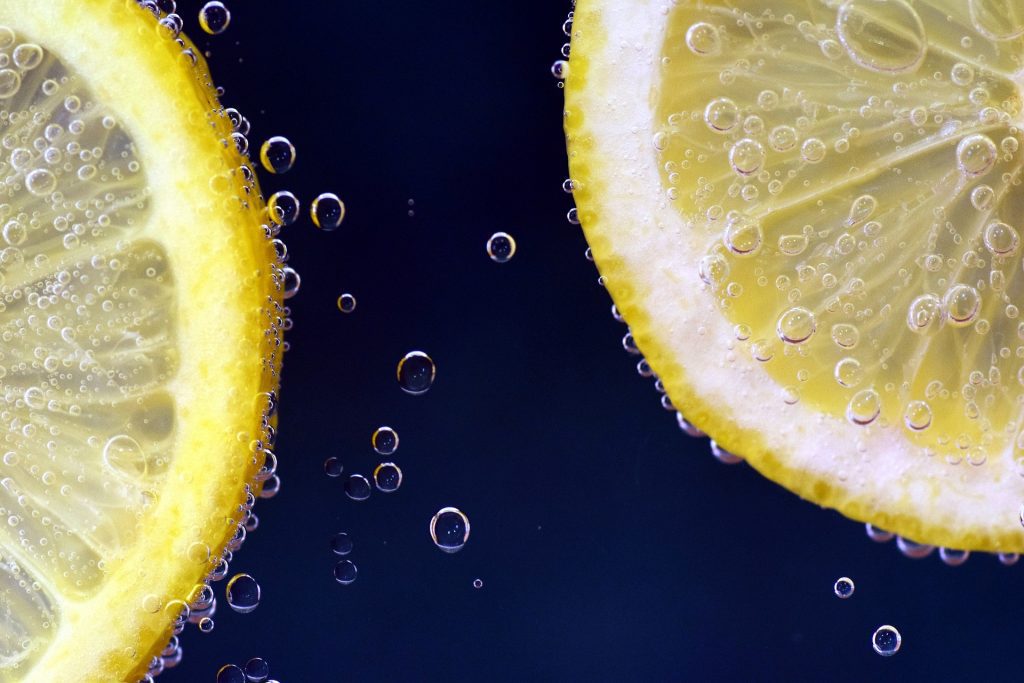
5. Beneficial For Skin
Apart from the health benefits of vitamin C, this water-soluble essential vitamin is also beneficial for the skin, thus boosting the nutrient’s demand and need. One of the basic natural skin-care items is curd. However, when mixed with a few drops of lemon juice, the presence of vitamin C makes the mixture of curd and lemon a more efficient and powerful product for your skincare regimen. This mixture, after being applied over the skin and massaged thoroughly, is kept for 15 minutes before being rinsed off, leaving behind radiant and glowing skin.
6. Preventing Scurvy
Just like the food items rich with vitamin C, the list of vitamin C benefits cannot be complete without the mention of scurvy, a disease caused due to the deficiency of vitamin C in the body, largely affecting children and small babies. Some of the symptoms of scurvy include bruising, fatigue, rashes, and bleeding gums.
7. It helps in Detoxification
Vitamin C can neutralize and remove environmental pollutants, the damage that occurs due to ultraviolet (UV) radiation and other pollutants.
8. It helps in Collagen Production
Collagen is a type of protein, containing about one-third of the total protein in humans. If you want glowing skin, healthy hair and nails, soft joints, and strong bones and muscles, you want optimal amounts of this particular protein. Vitamin C may help in collagen production which will lead to healthy skin and hair.
Why Is Vitamin C important?
A diet rich in vitamins and minerals is essential. Vitamin C is a type of antioxidant. It protects the body’s cells from damage caused by all the external and internal factors. These factors can cause changes in cells and DNA that can lead to illnesses, including cancer and diabetes.
Commonly Available Vitamin C Rich Foods
Let’s have a look at the foods that are rich in vitamin C and why vitamin c intake is important for us. Vitamin C plays an important role in the body’s functioning. From helping the brain’s efficient functioning to building immunity against common cold and flu, vitamin C, a naturally occurring nutrient, is normally found in raw ingredients that we use in diverse recipes. Some of the foods containing high amounts of vitamin C are –
If you have any ongoing medical conditions like cancer, heart disease, or diabetes, get a proper medical advice from a health care professional and consult a certified nutritionist for any major or sudden dietary changes.
1. Citrus Fruits
Of course, the list of items containing vitamin C cannot start without mentioning the ‘citrus’ genus of plants. It is common knowledge that citrus fruits such as oranges, and lemon, are a good source of vitamin C and fiber. Foods like citrus fruits have one of the highest vitamin c content.
However, the amount of vitamin C present inside the fruit differs from the way of cultivation and the species of the plant. It was seen that fruits which are cultivated through organic method have a high value of vitamin C as compared to the fruits cultivated through conventional methods of cultivation.
Some examples of citrus fruits are orange (संतरा), lemon, lime, pomelo, sweet lemon (मौसमी), grapefruit and many more. Oranges, limes and lemons are easily available in India.
Most citrus fruits like an orange, grapefruit and mosambi can be eaten raw as it is, as a mid-day snack, as a fresh fruit juice, while some citrus fruits like lemon and lime can be used to make refreshing beverages (nimbu paani, mojito), squeezed on top of dishes to spruce them up like a corn chaat, bhel, tadka dal or tacos.
Desserts and citrus fruits also have a deep rooted flavor relation. One of them being some decadent orange and chocolate based cakes and mousse. A lemon curd filling for pies and tarts is quiet common too. You can use these citrus fruits to make sorbets at home.
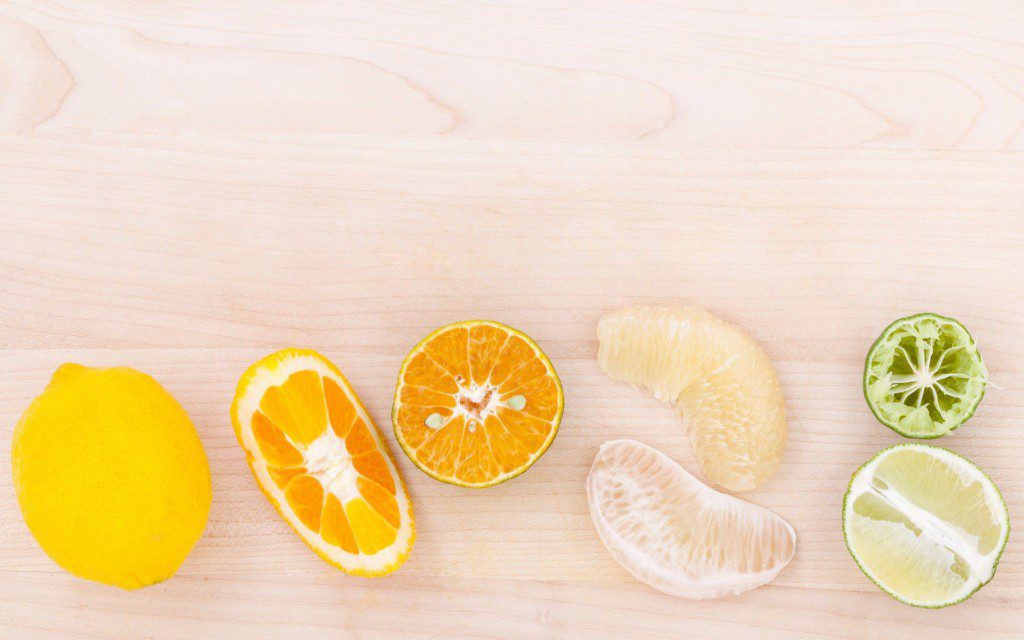
2. Cauliflower
Simply one of the many vegetables which contain large amounts of vitamin C, cauliflower (गोभी) is also one of the most consumed vegetables around the world. Apart from having a high content of vitamin C, cauliflower also contains a moderate amount of vitamin B and Vitamin K.
The common way of eating cauliflower includes the consumption of its head (which has a cheese curd-like appearance), which is normally roasted along with some other vegetable and spices before being served.

3. Broccoli
Belonging to the same family of plants as the cauliflower (cabbage family), broccoli (ब्रोकोली) is a far superior source of vitamin C as compared to the humble cauliflower. A serving of 100 gram of broccoli can provide you with about 20% of the daily value of vitamin C (RDA).
Full of nutrients, broccoli can be included in your diet in a lot of delicious ways. Similar to cauliflower, broccoli is normally consumed after roasting it along with other spices and vegetables. Broccoli can also be consumed steamed, or stir-fried along with other healthy options like red peppers, carrots, tofu and green peppers.

4. Spinach And Other Green Leafy Vegetables
Spinach (पालक) and other leafy vegetables, also known as leafy greens, are a good source of vitamin C too. And, apart from consisting of a high content of vitamin C, leafy greens are also considered to be filled with protein, fiber, and vitamin K.
Many leafy vegetables such as spinach can be eaten raw in salads or sandwiches or cooked as part of sautés. Spinach or palak, of course, as a huge demand in India and is enjoyed as part of a variety of dishes like palak-paneer, saag-meet, sarson-ka-saag, etc.
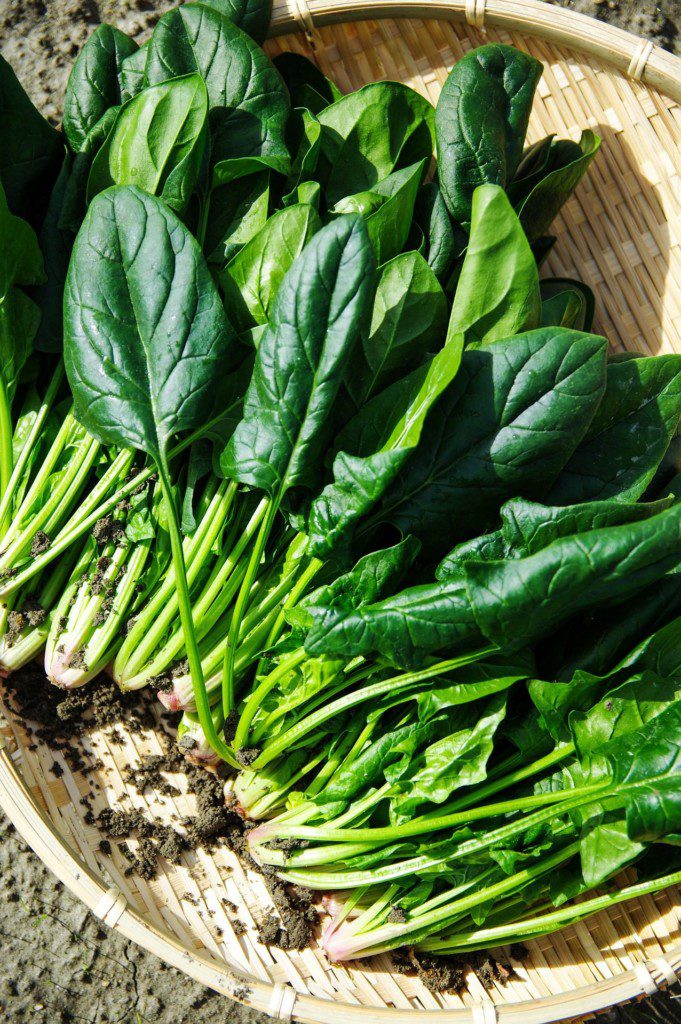
5. Tomato
One of the basic ingredients that are consumed in almost every home, nearly every day, tomato is probably one of the safest and moderate sources of vitamin C. A 100 gm of a serving of tomatoes can provide about 17% of the daily requirement of vitamin C.
Tomatoes (टमाटर) are consumed in almost every part of this world. It is used as a basic ingredient in almost all different kinds of cuisine, whether it is European or South Asian. Tomatoes can also be consumed raw and be served as a salad alongside other veggies like cucumbers, carrots and onions.
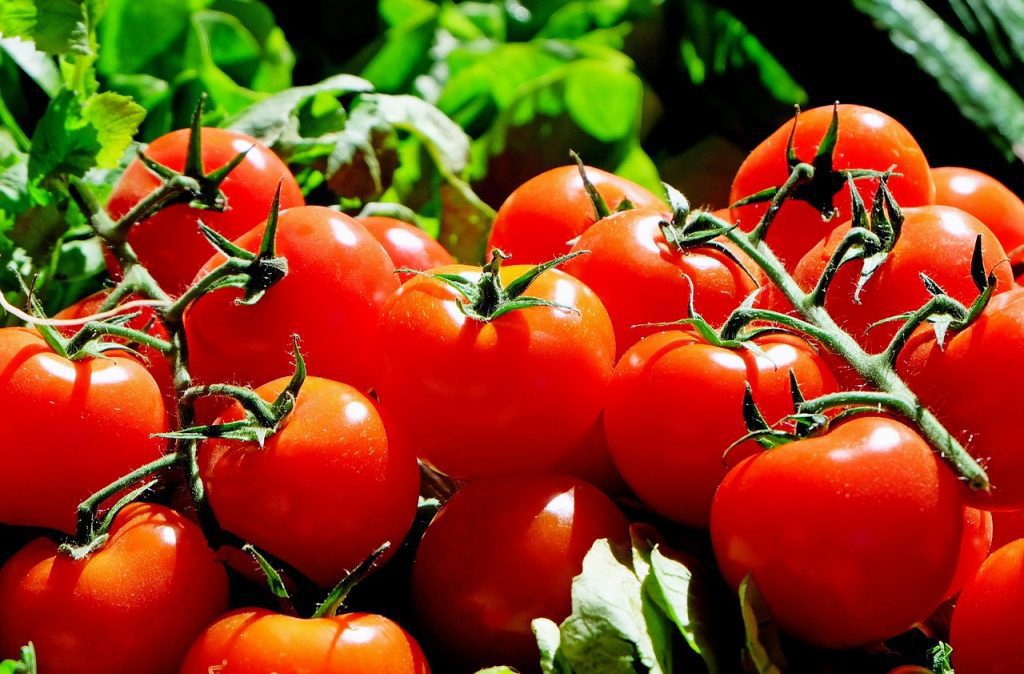
6. Papaya
There is no better way to finish this list than with the healthy papaya (पपीता), which is also a good source of protein. A 100 gm serving of papaya can provide you with about 75% of your daily vitamin C requirement. Unlike others, papaya is normally consumed raw and sometimes served as an ingredient in a fruit salad in order to improve its nutrient intake.
Though there are various sources of vitamin C, it is important to understand the appropriate value of intake of vitamin C and form a diet based on it.
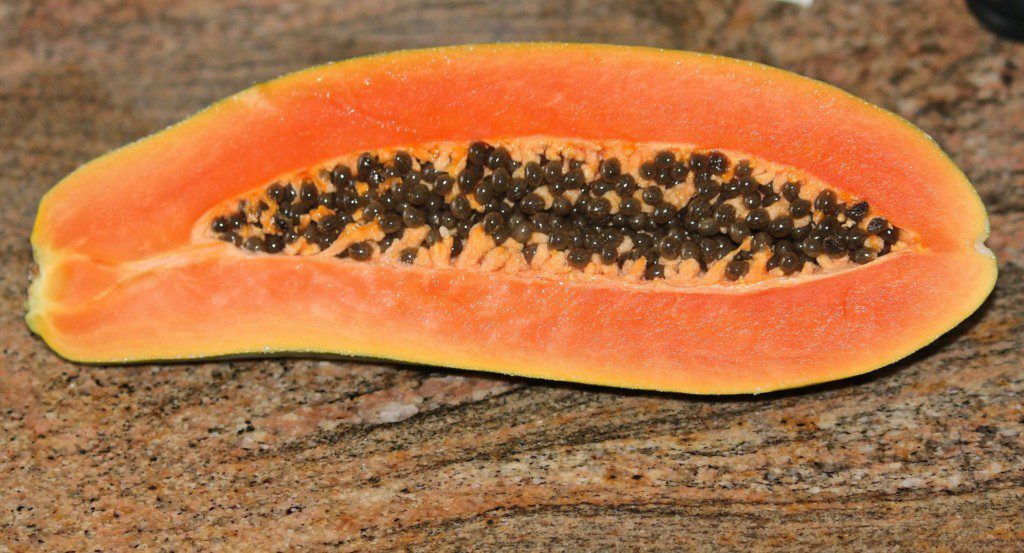
7. Strawberries
Strawberries (स्ट्रॉबेरी) are not only one of the most beautiful fruit to look at, but are also rich in antioxidants and high in vitamin C. Some studies have shown that eating strawberries can also help reduce the risk of diseases like cancer, heart disease, dementia and diabetes.
Strawberries are best enjoyed as it is or can be turned into a delicious strawberry shake, added in desserts like a cheesecake or a tart or even added raw in a salad. Did you know that 150 grams of strawberries provide approximately 89 mg of vitamin C?
Fruits like kiwis are also high in vitamin c and can be consumed if you are not a fan of citrus fruits. A kiwi, banana and strawberry smoothie is a brilliant way to start the day.
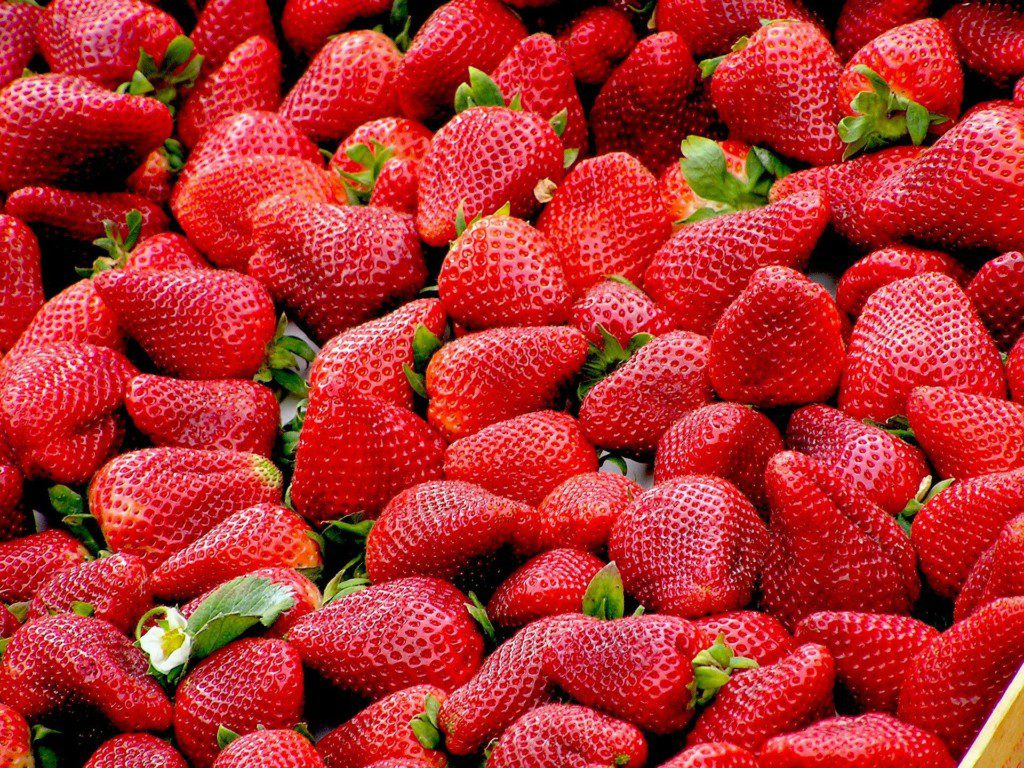
8. Chili Peppers
Green and red chili peppers (मिर्च) are both excellent sources of vitamin c. Green chili pepper provide a higher vitamin c content in comparison to red chili pepper. Some studies even suggest that including these peppers in your diet may help boost weight loss.
People with high chili tolerance levels can add some to their meals in their raw form, while some can add it to their sabzi or tadka to reduce the heat.
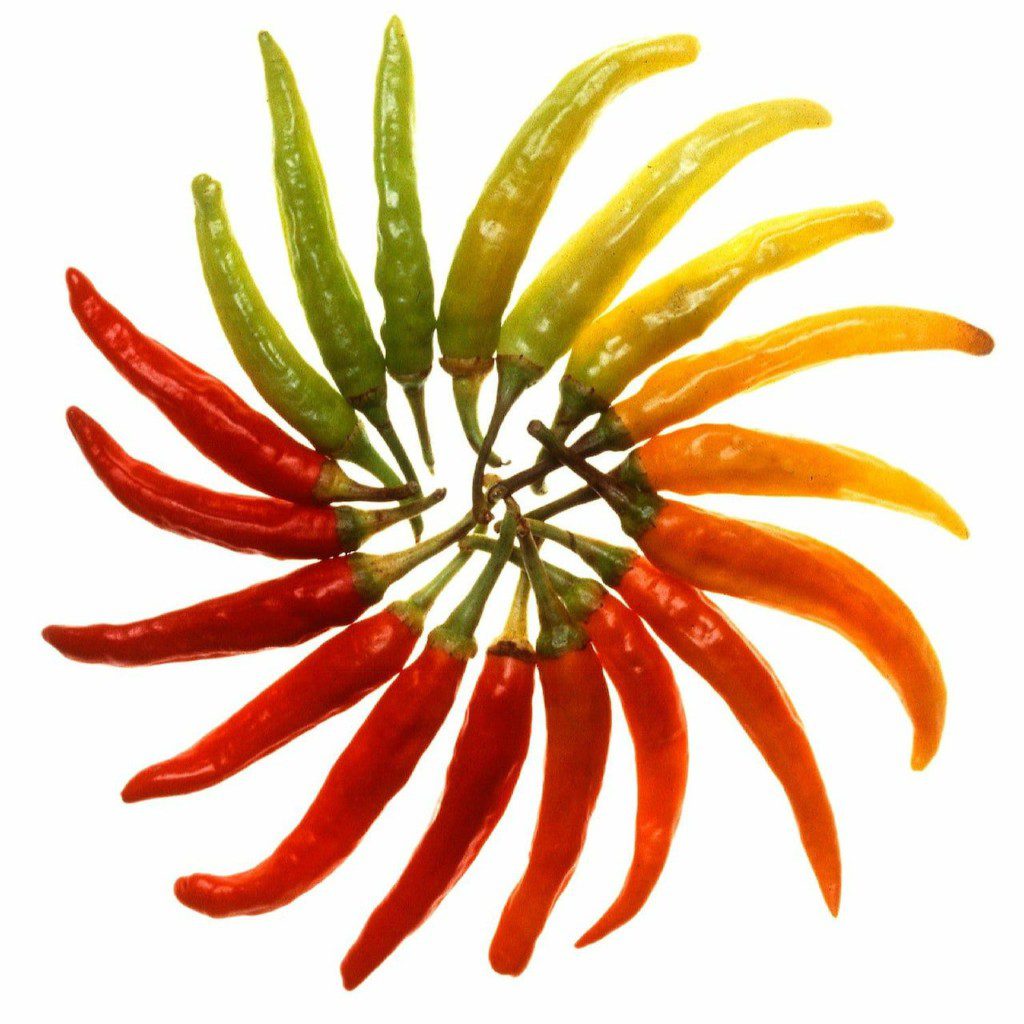
Vitamin C is an important part of the immune system, which defends against viruses, bacteria, and other pathogens. Studies show that low levels of vitamin C lead to problems with the immune system and other illnesses.
Side-Effects Of Excessive Intake Of Vitamin C
As the natural law states that for every action there is an equal and opposite reaction, we can’t help but wonder that if vitamin C is responsible for being such a beneficial part of our diet, there must be some disadvantages associated with it.
Some of the disadvantages that are associated with the unregulated consumption of vitamin C are listed below:
1. Increase In Iron Consumption
Vitamin C is considered to be an important nutrient that helps in the increased rate of consumption of iron, which is good for health. However, since vitamin C makes it easier for the body to absorb iron, it can sometimes lead to the absorption of an excessive amount of iron, which might have adverse effects on the heart, liver, pancreas, and sometimes may even result in nausea. Keep your vitamin c levels in check to avoid this.
2. Adverse Effects On Our Kidneys
Overloading of vitamin C can cause some severe effects on the kidneys. Vitamin C is a type of antioxidant with is soluble in water; hence it is difficult for our body to store it; excess vitamin C in the body is removed through the urine. However, if the consumption of vitamin C increases the required daily consumption rate, it starts to get accumulated in the kidneys rather than being soluble, which might increase the risk of the formation of kidney stones.
Apart from the above-mentioned side-effects, heavy unregulated consumption of vitamin C can also result in other side-effects that are rather small and rare. Some of these adverse effects of vitamin C include diarrhea, headaches, and muscle cramps.
Signs of Excessive Intake Of Vitamin C
• Diarrhea
• Dizziness or faintness (with the injection only)
• Flushing or redness of the skin
• Headache
• Increase in urination (mild)
• Nausea or vomiting
• Stomach cramps
Symptoms of vitamin C deficiency can start to show after 8 to 12 weeks.
Signs include –
- Loss of appetite
- Weight loss
- Fatigue
- Irritability
- Lethargy
Within 1 to 3 months, there may be signs of –
- Anemia
- Myalgia, or pain, including bone pain
- Swelling, or edema
- Petechiae, or small red spots resulting from bleeding under the skin
- Corkscrew hairs
- Gum disease and loss of teeth
- Poor wound healing
- Shortness of breath
- Mood changes, and depression
Treatment involves administering vitamin C supplements by mouth or by injection. Not adhering to the treatment properly can result in prolonged after effects. Within 24 hours of diagnosis and starting the treatment, patients can expect to see an improvement in fatigue, lethargy or laziness, pain, anorexia, etc. Bruising, bleeding, and weakness start to resolve within 1 to 2 weeks. After 3 months, recovery of the deficiency is possible.
Summary
The main takeaway from this article about vitamin C, its sources, its uses, and its side-effects, is that the only way you can have an efficient and healthy diet is not just by having a perfect set of food items for your daily consumption, but by also managing responsibly and regulating the diet based on your body’s need.
FAQs
1. Are brussel sprouts rich in vitamin C?
Yes. Brussel sprouts are a good source of Vitamin C and can be included in your diet in a number of ways. You can roast, grill or steam brussel sprouts as a side or even turn them into a spicy sabzi to make it more friendly for the Indian tastebuds.
2. Does amla provide our body with Vitamin C?
Amla or Indian gooseberry is a very rich and inexpensive source of Vitamin C. Easily available throughout the country, amlas can be added to our diets in several ways to make it nutrition rich.
Apart from eating it raw, here are some tips on how to include amla in your diet –
1. Add amlas in a smoothie. Amla tastes great in a kiwi and smoothie.
2. Add it to a coriander chutney for a power packed condiment.
3. Pressure cook them with some salt and turmeric.
4. Slow cooked amlas with some ghee and salt can be served as a side with lunch.
5. An amla murabba is super delicious and nutritious. The sticky sweetness will be a welcome change.
6. A fun way to introduce amla amongst kids is amla candy, which is readily available in stores.
7. You can eat store bought amla powder also.
8. Amla juice can be made fresh at home or can be store bought too.
3. Which fruit has the most vitamin C?
These are the best food sources of Vitamin C, apart from the fruits mentioned above – cantaloupe, pineapple, guava and kiwi fruit.
Disclaimer – This content including advice provides generic information only. It is in no way a substitute for qualified medical opinion. Always consult a specialist or your own doctor for more information before making any dietary changes.


